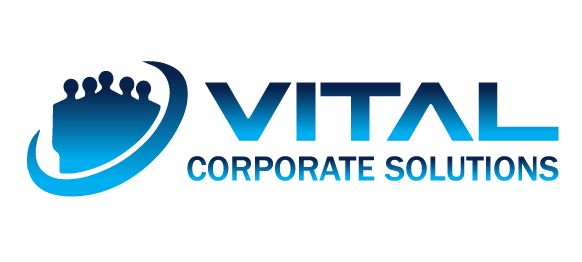What Is an Administrative Services Organization (ASO)?
Businesses may contract with an Administrative Services to handle specific administrative and human resource (HR) functions.
The employment connection and responsibilities are the key distinctions that set an apart from other employment services such as PEOs or Employee Leasing Organizations (ELOs). The client company continues to be the “employer of record” for tax and legal purposes when dealing with an Administrative Services This implies that the company maintains complete control over its workforce and all related legal obligations even when the ASO manages administrative duties.
ASOs assume administrative responsibilities without committing to a co-employment model, so the business maintains ownership of employee programs, its tax identification number, and its liability for compliance problems. In contrast, PEOs operate under a co-employment framework, while this autonomy does not exist.
Essential Services Served by an ASO
Payroll Support:
Administrative Services handle payroll processing, ensuring that employees are paid accurately and on time. They also manage tax deductions and filings, easing the burden on the company’s internal team.
Management of Incentives:
While the business is ultimately in charge of obtaining its benefit plans, an administrative organization can help with program administration and broker relations.They relieve the business of the responsibility of overseeing day-to-day operations by helping to ensure that employees receive the benefits to which they are legally entitled.
HR Administration:
ASO provide a comprehensive range of HR administrative support, from maintaining employee records to handling issues related to compliance and performance management.
Maintaining Regulatory
Compliance can be challenging for businesses, particularly in areas like employment law where laws and regulations are always changing. By decreasing the likelihood of penalties or legal problems, ASO aids in ensuring compliance.
Motivation for the Need for Administrative Services Organizations
An ASO’s ability to expand an organization’s HR department’s capabilities is what makes it so important. Businesses can reap numerous advantages by outsourcing these essential operations, such as increased productivity, decreased administrative workloads, and enhanced personnel management. Assisting companies in very complicated administrative and compliance domains such as healthcare might greatly benefit from collaborating with Administrative Services.
For small-to medium-sized clinics and healthcare facilities, balancing patient care with administrative duties is a common difficulty. By assigning administrative tasks like payroll, benefits administration, and regulatory compliance to a third party, healthcare practitioners can focus on delivering optimal patient care.
Comparing ASO with PEO: Recognizing the Differences
Professional Employer Organizations (PEOs) and ASOs both provide HR outsourcing services; the primary distinction between the two models is the degree of control and risk that each entails. decisive element for companies picking between an ASO and a PEO. Working under a co-employment paradigm, a PEO takes on the role of employer of record for certain aspects of employment, such as benefits and payroll.
The PEO and the company have certain legal obligations and liabilities because of this co-employment arrangement. The PEO manages benefits for employees, offers group health insurance, files taxes using its own federal identification number, and more.
On the other hand, when an ASO is used, the company is still in complete control of its personnel, including compliance and tax filing. Administrative Services provide administrative assistance; nevertheless, it bears no responsibility for the legal obligations or liabilities associated with employment.

When Should a Business Choose an ASO?
Benefits Administration:
Administrators assist in the management of benefit programs, but they neither supply nor finance the benefits. This means that the company must take on the responsibility of securing and funding benefits packages. However, ASOs can assist in interfacing with brokers and ensuring that the benefits are managed effectively.
HR Help:
Both ASOs and PEOs provide HR help, but Administrative Services offer a more hands-on administrative approach. They assist with day-to-day HR management duties like compliance and payroll, but higher-level strategic choices still need to be made by the company.
Pricing Considerations:
ASOs are often more economical than PEOs, especially for small firms, because the majority of ASO services charge a flat amount per person, which can be a more predictable and acceptable pricing structure than the percentage-based costs that some PEOs charge.
Risk management:
PEOs are a tempting option for businesses concerned about liability and compliance since they assume some of the financial and legal risks associated with hiring. This is one of their primary benefits. Administrative Services does not, however, allow
Conclusion: Is this ASO Right for your Business?

For Australian firms wishing to streamline their HR services without sacrificing control, an Administrative Services Organization (ASO) offers a personalized solution. Businesses can keep full legal responsibility for their employees while minimizing the administrative load by outsourcing services like compliance management, payroll, and benefits administration.
Small and medium-sized enterprises are especially drawn to administrative services because they seek to minimize expenses and stay away from the complications of a co-employment model. Even these administrative organizations might not provide the full range of services provided by PEOs, their affordability and adaptability make them a desirable substitute for businesses looking to expand without sacrificing control over their HR functions.
Inventory Management Services Australia
Smarter stock control for smoother business operations
At Vital Corporation Solutions, we help Australian businesses take control of their inventory with reliable, accurate, and efficient inventory management services. Whether you’re running a retail store, warehouse, e-commerce site, or manufacturing operation, managing inventory the right way is crucial to your profitability and long-term success.
We provide tailored inventory solutions that integrate with your accounting and bookkeeping processes, giving you full visibility and control over your stock—no matter where you are in Australia.
What Is Inventory Management?
Inventory management is the process of tracking, managing, and optimizing the goods or materials your business buys, sells, or stores. It involves monitoring stock levels, managing purchase orders, handling returns, reducing wastage, and syncing inventory with sales and financial data.
Done right, inventory management prevents overstocking, eliminates stockouts, and helps you run a lean, profitable business.


Why Do You Need Inventory Management?
- Avoid Stockouts & Overstocking
Never lose a sale or waste money on excess inventory again. - Increase Cash Flow & Profitability
Free up working capital by only stocking what you need, when you need it. - Improve Financial Accuracy
Connect inventory to your accounting system for real-time cost of goods sold (COGS) and better financial reporting. - Streamline Operations
Reduce errors, improve order accuracy, and keep your stock moving efficiently. - Make Informed Purchasing Decisions
Know what’s selling, what’s sitting, and what to reorder—based on real data.
Benefits of Our Inventory Management Services
- Accurate Stock Control
Know exactly how much inventory you have, where it is, and what it’s worth. - Integrated With Accounting
Real-time data for accurate financials, inventory valuation, and audit readiness. - Better Supplier & Customer Management
Improve order fulfillment times and supplier coordination with real-time inventory visibility.
- Boost Sales & Minimise Loss
Never miss a sale due to stock issues and reduce write-offs from expired or obsolete goods. - Customised to Your Industry
Retail, eCommerce, wholesale, manufacturing—we tailor our process to your needs. - Nationwide Support
From Sydney and Melbourne to Perth, Brisbane, Adelaide, and beyond—we’ve got Australia covered.
Why Choose Vital Corporation Solutions?
Experienced in End-to-End Inventory & Accounting Services
Smart Software Integration & Automation Experts
Full Bookkeeping and Financial Support Under One Roof
Dedicated Local Support & Ongoing Advice
Solutions Built for Australian Businesses of All Sizes
Scalable Services for Growing Companies
Our Inventory Management Process
At Vital Corporation Solutions, we offer a strategic and tech-enabled approach to managing your inventory:
- Initial Assessment & Consultation
We review your current inventory setup, business model, and operational goals. - Inventory System Setup or Integration
We set up or integrate smart inventory management software tailored to your business size and industry. - Stock Level Optimization
We help define ideal stock levels, reorder points, and safety stock requirements. - Real-Time Tracking & Reporting
We enable live tracking of stock levels, movements, and performance across all locations. - Accounting & Bookkeeping Sync
Your inventory data is directly linked to your bookkeeping for better insights and accurate COGS. - Ongoing Support & Refinement
As your business grows, we continue to monitor, refine, and adapt your inventory strategy.
Take Control of Your Inventory with Confidence
No more guesswork, no more losses—just reliable inventory management that supports your growth. Let Vital Corporation Solutions help you streamline your stock, boost profitability, and stay ahead of the competition.
What Is an Administrative Services Organization (ASO)?
Businesses may contract with an Administrative Services to handle specific administrative and human resource (HR) functions.
The employment connection and responsibilities are the key distinctions that set an apart from other employment services such as PEOs or Employee Leasing Organizations (ELOs). The client company continues to be the “employer of record” for tax and legal purposes when dealing with an Administrative Services This implies that the company maintains complete control over its workforce and all related legal obligations even when the ASO manages administrative duties.
ASOs assume administrative responsibilities without committing to a co-employment model, so the business maintains ownership of employee programs, its tax identification number, and its liability for compliance problems. In contrast, PEOs operate under a co-employment framework, while this autonomy does not exist.
Essential Services Served by an ASO
Payroll Support:
Administrative Services handle payroll processing, ensuring that employees are paid accurately and on time. They also manage tax deductions and filings, easing the burden on the company’s internal team.
Management of Incentives:
While the business is ultimately in charge of obtaining its benefit plans, an administrative organization can help with program administration and broker relations.They relieve the business of the responsibility of overseeing day-to-day operations by helping to ensure that employees receive the benefits to which they are legally entitled.
HR Administration:
ASO provide a comprehensive range of HR administrative support, from maintaining employee records to handling issues related to compliance and performance management.
Maintaining Regulatory
Compliance can be challenging for businesses, particularly in areas like employment law where laws and regulations are always changing. By decreasing the likelihood of penalties or legal problems, ASO aids in ensuring compliance.
Motivation for the Need for Administrative Services Organizations
An ASO’s ability to expand an organization’s HR department’s capabilities is what makes it so important. Businesses can reap numerous advantages by outsourcing these essential operations, such as increased productivity, decreased administrative workloads, and enhanced personnel management. Assisting companies in very complicated administrative and compliance domains such as healthcare might greatly benefit from collaborating with Administrative Services.
For small-to medium-sized clinics and healthcare facilities, balancing patient care with administrative duties is a common difficulty. By assigning administrative tasks like payroll, benefits administration, and regulatory compliance to a third party, healthcare practitioners can focus on delivering optimal patient care.
Comparing ASO with PEO: Recognizing the Differences
Professional Employer Organizations (PEOs) and ASOs both provide HR outsourcing services; the primary distinction between the two models is the degree of control and risk that each entails. decisive element for companies picking between an ASO and a PEO. Working under a co-employment paradigm, a PEO takes on the role of employer of record for certain aspects of employment, such as benefits and payroll.
The PEO and the company have certain legal obligations and liabilities because of this co-employment arrangement. The PEO manages benefits for employees, offers group health insurance, files taxes using its own federal identification number, and more.
On the other hand, when an ASO is used, the company is still in complete control of its personnel, including compliance and tax filing. Administrative Services provide administrative assistance; nevertheless, it bears no responsibility for the legal obligations or liabilities associated with employment.

When Should a Business Choose an ASO?
Benefits Administration:
Administrators assist in the management of benefit programs, but they neither supply nor finance the benefits. This means that the company must take on the responsibility of securing and funding benefits packages. However, ASOs can assist in interfacing with brokers and ensuring that the benefits are managed effectively.
HR Help:
Both ASOs and PEOs provide HR help, but Administrative Services offer a more hands-on administrative approach. They assist with day-to-day HR management duties like compliance and payroll, but higher-level strategic choices still need to be made by the company.
Pricing Considerations:
ASOs are often more economical than PEOs, especially for small firms, because the majority of ASO services charge a flat amount per person, which can be a more predictable and acceptable pricing structure than the percentage-based costs that some PEOs charge.
Risk management:
PEOs are a tempting option for businesses concerned about liability and compliance since they assume some of the financial and legal risks associated with hiring. This is one of their primary benefits. Administrative Services does not, however, allow
Conclusion: Is this ASO Right for your Business?

For Australian firms wishing to streamline their HR services without sacrificing control, an Administrative Services Organization (ASO) offers a personalized solution. Businesses can keep full legal responsibility for their employees while minimizing the administrative load by outsourcing services like compliance management, payroll, and benefits administration.
Small and medium-sized enterprises are especially drawn to administrative services because they seek to minimize expenses and stay away from the complications of a co-employment model. Even these administrative organizations might not provide the full range of services provided by PEOs, their affordability and adaptability make them a desirable substitute for businesses looking to expand without sacrificing control over their HR functions.

